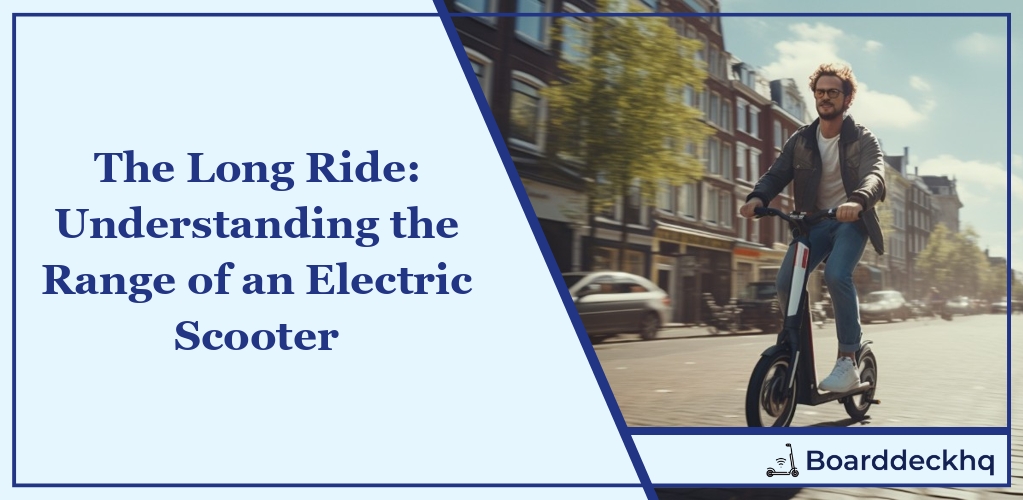Imagine you’re gearing up for an adventurous ride on your sleek electric scooter, the wind in your hair, the world zooming by. But then, a nagging question pulls you back; “How far can I really go on a full charge?” The answer to this question is not as straightforward as it may seem, and is influenced by a myriad of factors such as the type of battery, its size, the model of your electric scooter, and even real-world conditions.
What we’ll cover:
- The Mystery Behind E-Scooter Battery Life
- E-Scooter Batteries and Performance
- The Role of Battery Size in E-Scooter Range
- The Interrelation of Pricing and Range
- A Look at Different E-Scooter Models and Their Range
- Real-World Factors Influencing E-Scooter Range
So buckle up and hold on tight as we embark on this electrifying journey to uncover the true range of an electric scooter on a full charge!
Unraveling the Mystery: The Battery Life of Your Electric Scooter
When it comes to determining how far an electric scooter can go on a full charge, one of the key factors is the battery life. The typical e-scooter battery can last anywhere from 1 to 5 years, depending on the type and quality of the battery, and how it’s used. But, there’s more to it than that.
Battery life isn’t just about how many years it’ll last before needing to be replaced. It also refers to how long the battery can power your scooter before needing a recharge. This is often referred to as the “range” of your e-scooter. So, when you’re planning a ride on your electric scooter, it’s important to consider both the long-term battery life and the range on a single charge.
Various factors can affect the battery life and range of your e-scooter. The speed you ride at, the weight the scooter is carrying, the terrain you’re riding on, and even the temperature can all play a part. For instance, riding your scooter at its maximum speed or carrying heavy loads can drain the battery faster, reducing its range. Similarly, hilly terrain or cold weather can also have a negative impact on battery performance.

That said, there are ways to extend the battery life and increase the range of your electric scooter. Regular maintenance, like keeping the battery clean and dry, is crucial. Avoiding overcharging and completely draining the battery can also help extend its lifespan. Riding at a moderate speed, reducing load weight, and choosing flat terrains can also help increase your electric scooter’s range.
Types of Electric Scooter Batteries and Their Performance
Now that we’ve covered some general aspects of electric scooter batteries, let’s dive into some specifics. There are two main types of batteries used in e-cooters: lithium-ion and lead-acid.
Lithium-ion batteries are more commonly used in modern electric scooters. They’re lightweight, have a high energy density, and can be recharged quickly. This makes them great for long-range scooters. However, they’re also more expensive and can degrade faster if not properly maintained.
On the other hand, lead-acid batteries are heavier and have a lower energy density. This means they don’t provide as long a range as lithium batteries. But, they’re more affordable and have a longer lifespan, making them a popular choice for budget-friendly scooters.

Impact of Battery Size on Electric Scooter’s Range
The size of the electric scooter’s battery is another critical factor that determines how far it can go on a full charge. The larger the battery, the greater the maximum range of your electric scooter. This is because a larger battery can store more energy, which translates into more power for your scooter to run on.
However, a larger battery also means a heavier e-scooter. This added weight can somewhat offset the increased range, especially if you’re riding on hilly terrain or carrying heavy loads. Plus, larger batteries take longer to charge and can be more expensive to replace.
So, while a larger battery can provide a longer range, it’s not always the best option for everyone. It’s important to consider your specific needs and circumstances when choosing the right battery size for your e-scooter.
Remember that no matter the size or type of your electric scooter’s battery, proper care and maintenance can go a long way in extending its life and maximizing its performance.
It’s also important to know how to charge your electric scooter at home correctly and avoid the perils of overcharging. By understanding how your scooter’s battery works and how to take care of it, you can ensure that you get the most out of each ride.
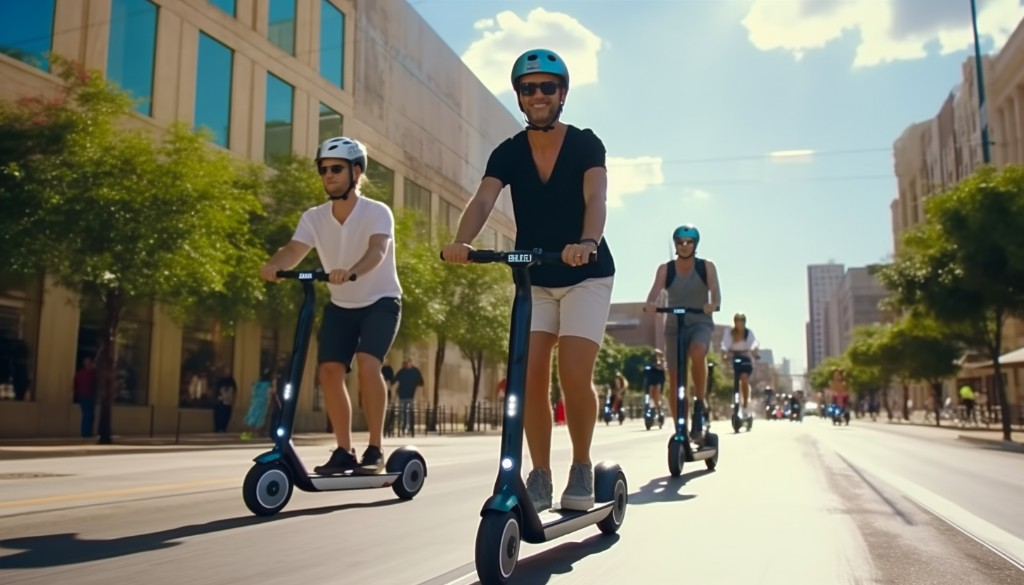
Pricing and Range: How They Interrelate
When it comes to purchasing an electric scooter, there is a common question that pops up: how far can it go on a single charge? It’s a crucial question, as the range of the scooter is directly linked to its practicality for daily use. However, the answer isn’t as straightforward as one might hope, as the range varies significantly based on several factors, one of which is the price.
There is a palpable relationship between the price of an e-scooter and its range. The more expensive the scooter model, the longer its range tends to be. It’s like buying a car. You pay more for better performance, higher comfort, and longer endurance.
But why does this correlation exist? Well, higher-priced electric scooters usually come equipped with larger batteries and more efficient motors. These components contribute to longer range capabilities. Manufacturers of expensive scooters invest in research and development to push the boundaries of battery technology and motor efficiency, allowing their products to cover more distance on a single charge.
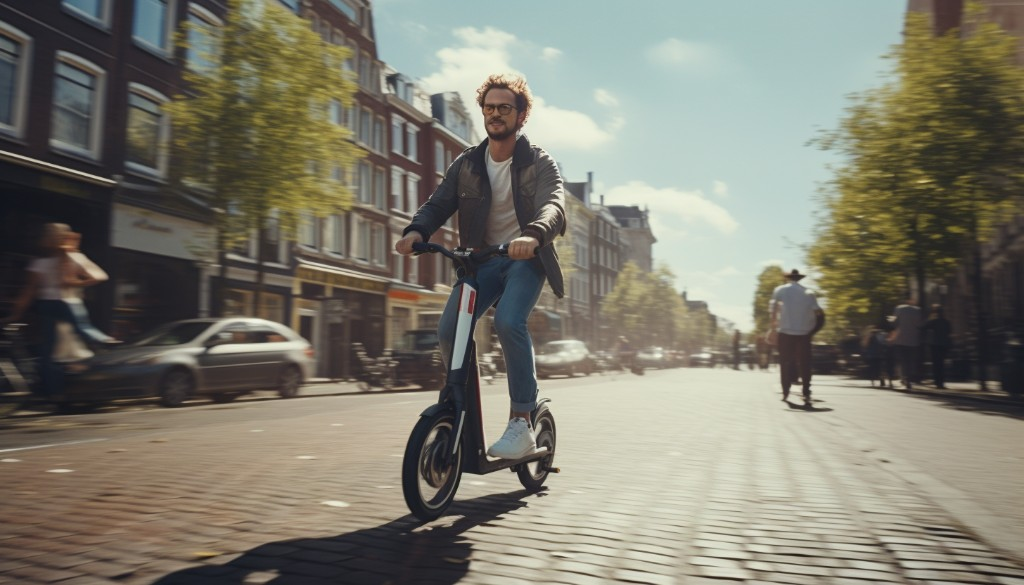
A Detailed Look at Electric Scooter Range
To put things into perspective, let’s take a detailed look at different electric scooter models across various price ranges and their corresponding range capabilities.
Budget Electric Scooters
Typically, cheaper e-scooters offer a range of around 10-15 miles on a single charge. These are great for short commutes or leisurely rides in the park but might not suffice if you’re planning longer trips. Their lower price tag reflects the use of smaller batteries and less powerful motors.
Mid-Range Electric Scooters
Moving up the ladder, mid-range electric scooters can offer a considerably longer range. You can expect these electric scooter models to cover distances between 15 and 30 miles on a single charge. These scooters strike a balance between affordability and performance, making them suitable for most daily commuting needs.
High-End Electric Scooters
Finally, if you’re willing to splurge, high-end electric scooters offer the longest range. These premium e-scooters can cover anywhere from 30 to 60 miles (or even more) on a single charge. They are equipped with larger batteries and high-efficiency motors, ensuring their superior range capabilities.
It’s important to remember that these are general estimates and the actual range of an electric scooter can vary based on factors such as rider weight, terrain, weather conditions, and riding style. Also, keep in mind that while a longer range is often desirable, it comes at a higher cost and usually means a heavier scooter due to the larger battery. Therefore, consider your specific needs and usage patterns before deciding on a scooter model.
In the end, there is a clear relationship between the price of an electric scooter and its range. The more you’re willing to spend, the farther you can go. However, understanding this relationship is just part of the equation.
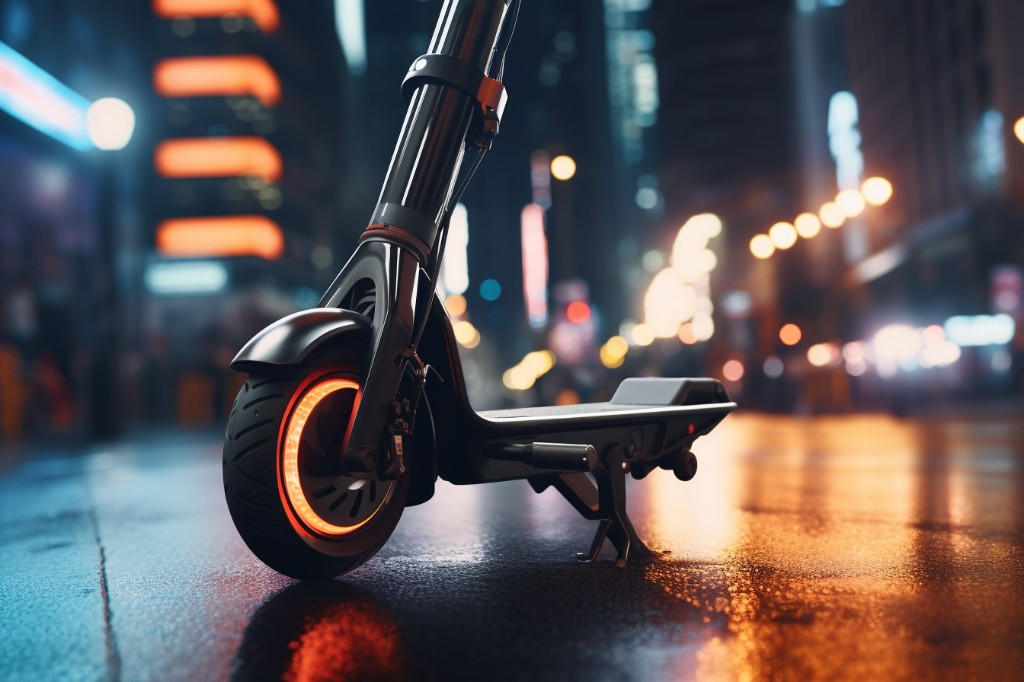
Real-World Factors Affecting the Range of Your Electric Scooter
While manufacturers often provide a maximum range for their electric scooters, it’s important to understand that real-world conditions can significantly impact the actual distance you can cover on a single charge. Some of the key factors include rider weight, terrain, speed, and weather conditions. Let’s delve deeper into how these elements can affect your scooter’s range.
Rider Weight
Your electric scooter works harder when carrying a heavier load, which in turn consumes more battery power. The more weight it has to haul, the less distance it can cover. So, if you’re on the heavier side or often carry heavy loads, your e-scooter’s maximum range might be less than the manufacturer’s claim. You therefore need to consider the weight limitations of your electric scooter to ensure it’s going to meet your requirements.
Terrain
The type of terrain you ride on plays a significant role in determining your e-scooter’s range. Flat surfaces are ideal for achieving maximum range as they require less energy than hilly or uneven terrains. Riding uphill demands more power, reducing your e-scooter’s range, while going downhill can conserve energy and potentially extend your range. However, continuously riding on rough or bumpy surfaces can drain your battery faster due to increased resistance.
Speed
The faster you go, the more energy your electric scooter uses. While it might be tempting to hit the top speed, maintaining high speeds can significantly decrease your scooter’s range. Conversely, riding at a moderate speed helps conserve battery life and thus increase your scooter’s range.
Weather Conditions
Extreme weather conditions can also impact your electric scooter’s performance and range. Cold temperatures may reduce battery capacity and consequently limit your scooter’s range. Similarly, strong winds can cause resistance and force your e-scooter to work harder, thereby consuming more battery power.

Maximizing Your Electric Scooter’s Range: Tips and Tricks
Now that we understand the factors that can impact your electric scooter’s range, let’s explore some tips and tricks to help you maximize it.
Maintain Optimal Speed
As mentioned earlier, riding at high speeds can drain your e-scooter’s battery faster. To maximize your range, try maintaining a moderate speed. Not only will this help conserve battery power, but it will also make your ride safer.
Reduce Weight
The lighter the load, the less energy your e-scooter needs to move. If possible, try to minimize the weight you’re carrying. This could mean leaving your heavy backpack at home or even losing a few pounds yourself.
Regular Maintenance
Just like any vehicle, regular maintenance can improve the performance of your electric scooter. Ensure the tires are properly inflated and replace them if they are worn out. Regularly check the brakes and battery condition as well. A well-maintained e-scooter is more likely to deliver a longer range.
Plan Your Route
Planning your route can help avoid unnecessary battery drain. Try to choose flat terrains and avoid areas with heavy traffic where you might need to stop and start frequently. Also, consider the weather forecast before setting off on your ride.
Use Eco Mode
Many electric scooters come with an eco mode, which limits the top speed and conserves battery life. Using this mode can significantly increase your scooter’s range, especially for longer rides.
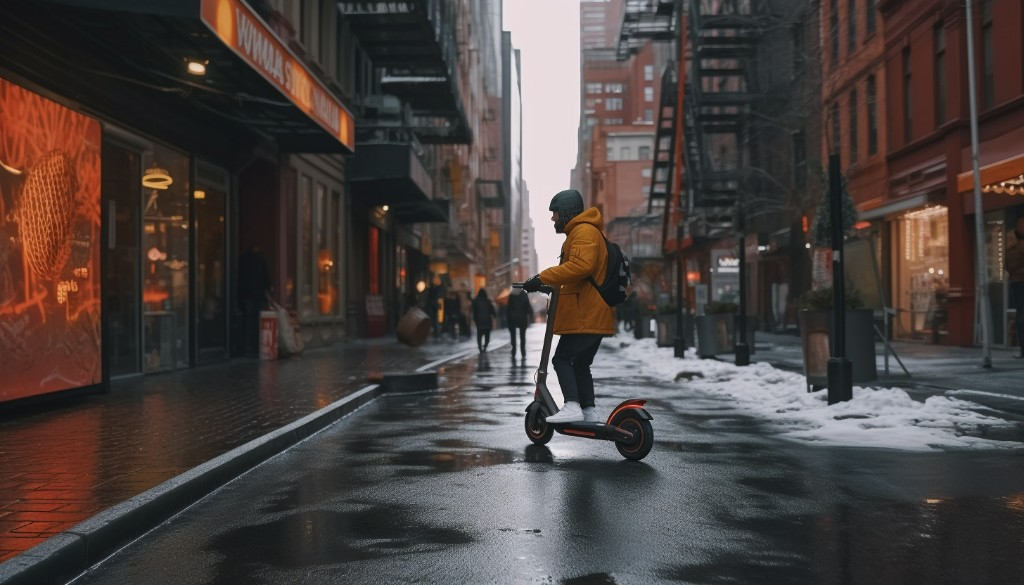
Understanding Your Electric Scooter’s Efficiency
Let’s get one thing straight. When you buy an electric scooter, you’re not just investing in a gadget. You’re investing in freedom, convenience, and a cleaner environment. But to truly make the most of this investment, it’s crucial to understand what influences the scooter’s range and how you can maximize it.
Let’s dive into the nitty-gritty of how far an e-scooter can go on a full charge.
Factors That Influence Your Scooter’s Range
An electric scooter’s range is primarily determined by its battery performance. Think of the battery as the heart of your scooter. Just like a healthy heart keeps you going strong, a high-performing battery ensures your e-scooter can cover more ground on a single charge.
Your scooter’s battery performance is influenced by several factors:
- Battery Capacity: The higher the battery capacity, the longer your scooter can run before it needs a recharge.
- Charge Cycles: Over time, batteries lose their ability to hold a charge, which can shorten your scooter’s range.
- Temperature: Batteries don’t fare well in extreme temperatures. Cold weather can reduce battery efficiency, while hot weather can lead to faster battery degradation.
Beyond battery performance, other factors can also affect your electric scooter’s maximum range:
- Rider Weight: Heavier riders require more energy to move, which can reduce the scooter’s range.
- Terrain: Riding uphill or on uneven terrain requires more energy than riding on flat ground.
- Riding Style: Aggressive riding styles, such as high speeds and sudden stops, can drain the battery faster.
Making an Informed Choice
Understanding these factors isn’t just about squeezing out every last mile from your e-scooter. It’s about making an informed choice when buying a new electric scooter or upgrading an existing one.
For instance, if you live in a hilly area or have a heavier build, you might want to consider an electric scooter with a higher battery capacity. Similarly, if you plan to use your e-scooter for daily commuting, you might want to factor in the potential impact of temperature on battery performance.
Remember, an electric scooter with a longer range isn’t necessarily better. It’s about finding the right balance between range, cost, and other features that matter to you.
Closing Thoughts
The enigma surrounding the battery life of an electric scooter is a multifaceted topic. From the various types of batteries and their performance to the size of the battery and its impact on the scooter’s range, it’s clear that these factors play a significant role in how far an electric scooter can travel on a full charge. The correlation between pricing and range was also discussed, with the understanding that more expensive models often offer longer ranges. It’s also crucial to remember that real-world factors, such as rider weight and terrain, can affect your e-scooter’s range.
In essence, the distance an electric scooter can cover on a full charge is dependent on numerous interrelated factors, making it a complex yet fascinating subject.
Frequently Asked Questions
How far can an electric scooter go on a full charge?
The distance an electric scooter can go on a full charge depends on various factors including the type and size of the battery, the model of the scooter, and real-world factors like rider weight and terrain. However, on average, most electric scooters can travel between 10 to 40 miles on a full charge.
How does the type of battery affect the range of an electric scooter?
The type of battery has a significant impact on the range of an electric scooter. Lithium-ion batteries, for example, are lightweight and have high energy density, enabling longer ranges compared to lead-acid batteries which are heavier and offer shorter ranges.
How does rider weight impact the range of an electric scooter?
Rider weight can greatly affect the range of an electric scooter. The heavier the rider, the more power the scooter needs to move, which in turn drains the battery faster. Therefore, a lighter rider will typically get more mileage out of a single charge than a heavier rider.
Can the range of an electric scooter be extended?
Yes, the range of an electric scooter can be extended in a few ways. These include maintaining the battery properly, reducing the weight the scooter has to carry, and riding in optimal conditions (smooth terrain, moderate speed, etc.).
What is the average range of a mid-priced electric scooter?
The average range of a mid-priced electric scooter typically falls between 15 to 25 miles on a full charge. However, this can vary based on the specific model and real-world factors such as rider weight and terrain.
